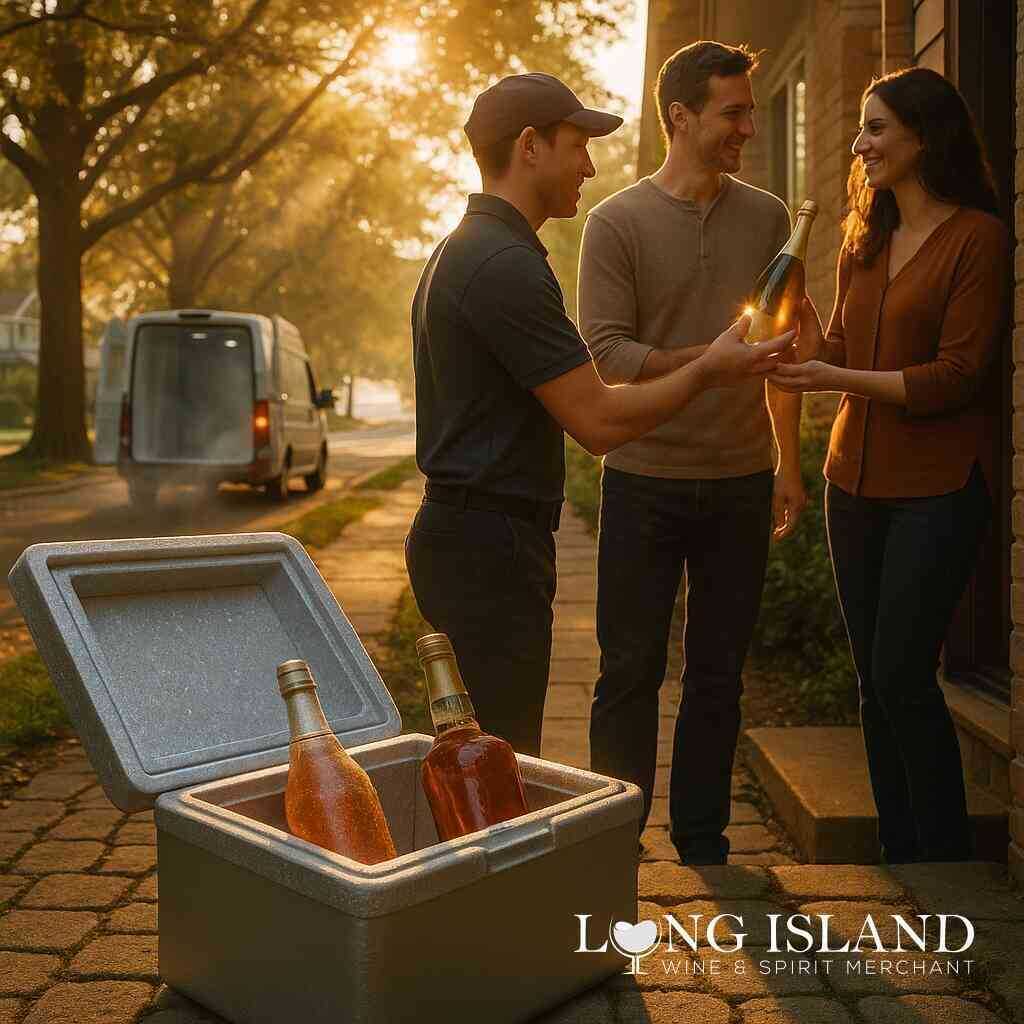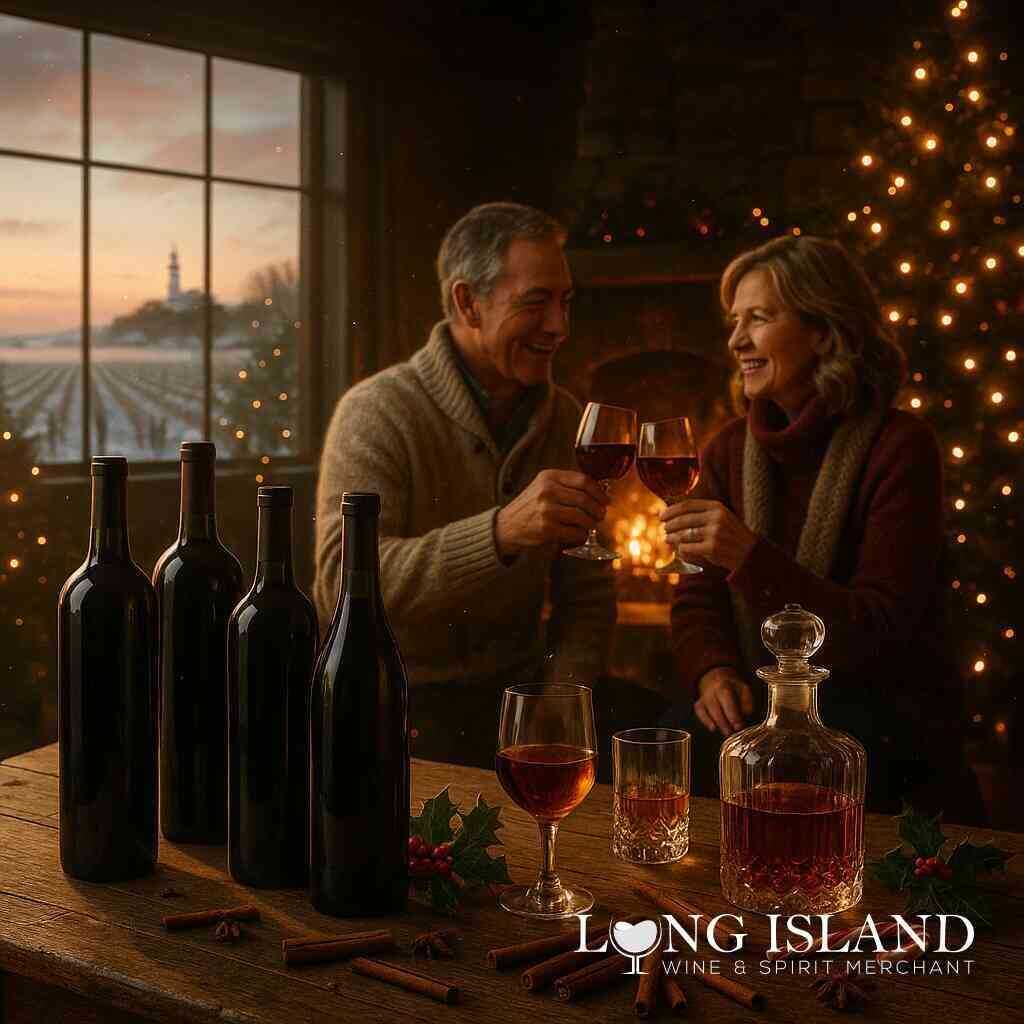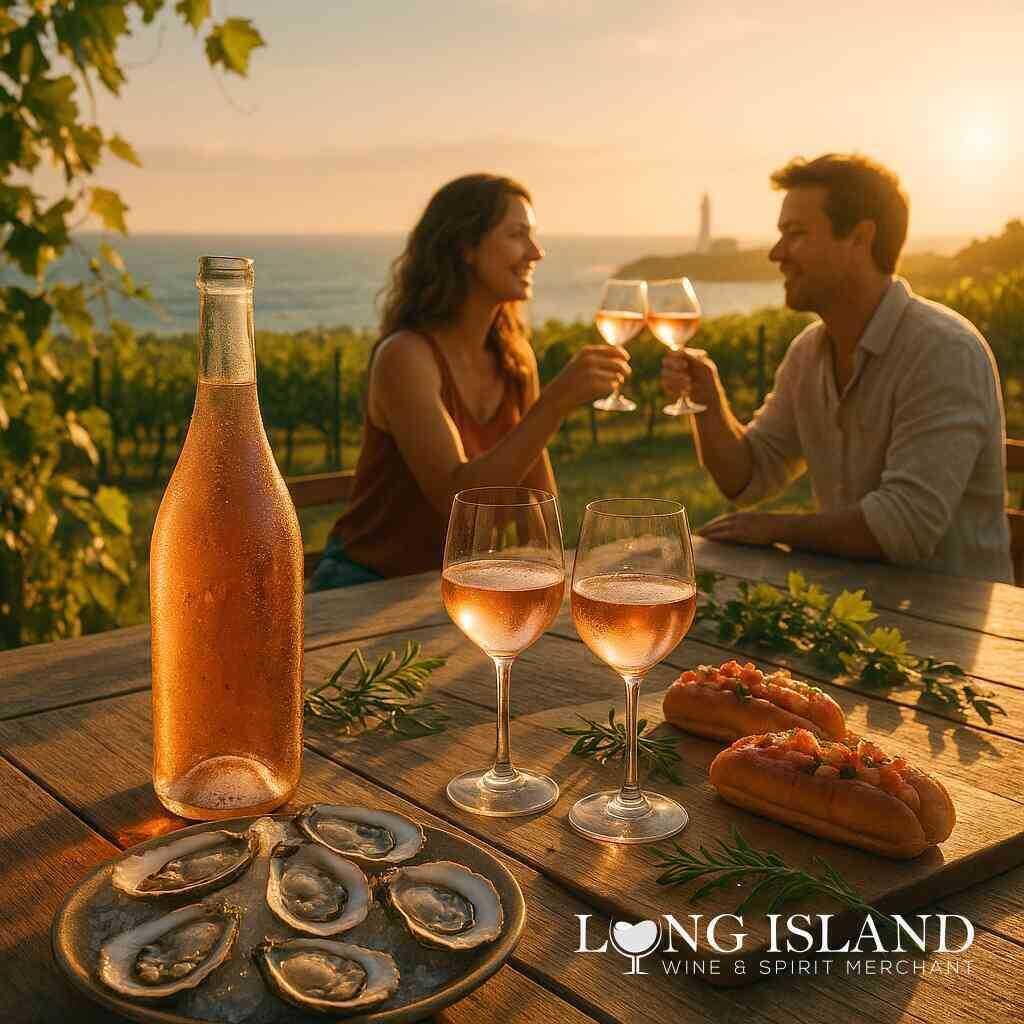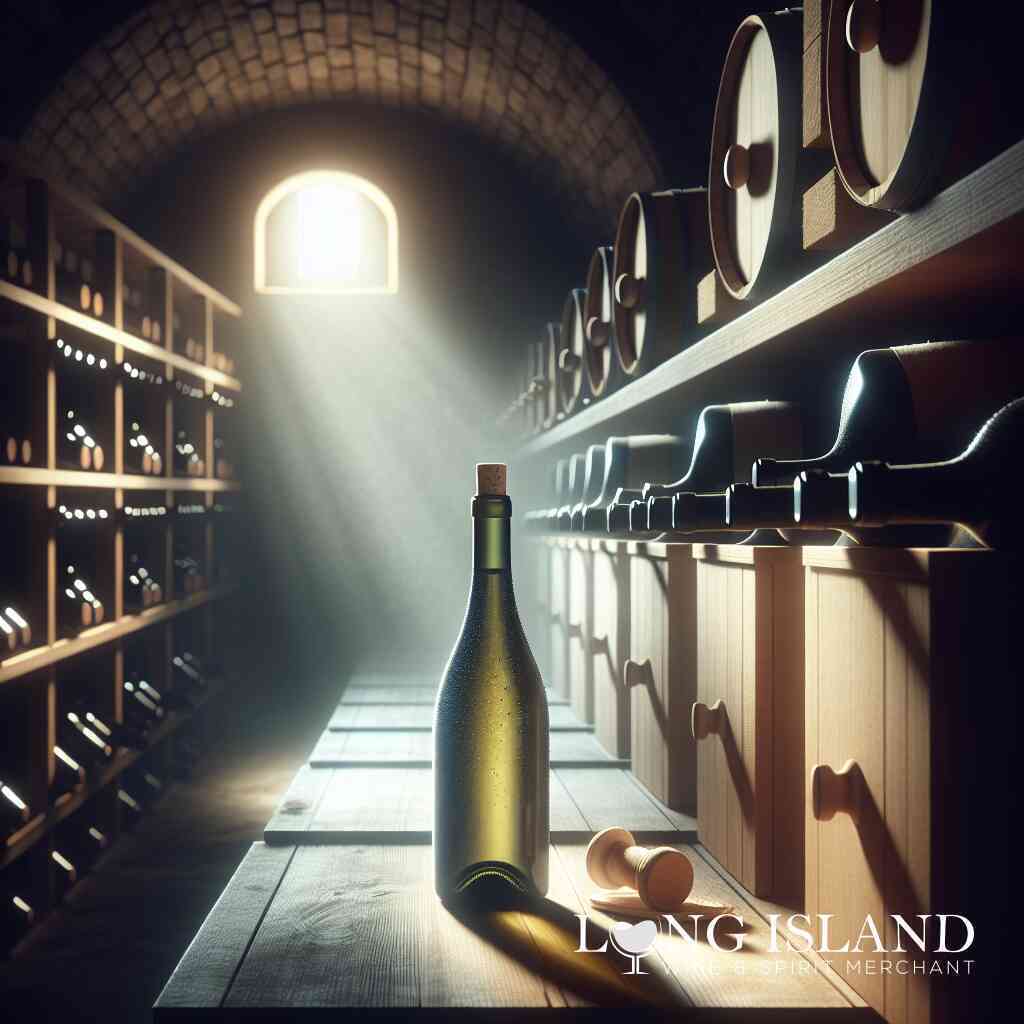
How Long Does Wine Last Unopened?
July 1, 2024
Uncorking the Basics of Wine Storage
Understanding Wine Preservation
When it comes to wine preservation, understanding the fundamentals can make the difference between a memorable bottle and a forgettable one. Unopened wine can last for decades, but its longevity significantly depends on the wine type and the conditions under which it’s stored. Each bottle of wine is a living entity, with its aging process influenced by external factors. The goal of wine preservation is to slow down any processes that degrade the wine, thus maintaining its quality and extending its life.
The Impact of Temperature on Wine
Temperature plays a pivotal role in the aging and storage of wine. Maintaining a consistent and optimal temperature is essential for preserving the wine’s quality over time. Fluctuations in temperature can accelerate the aging process, causing the wine to mature faster than desired. For red wine, the ideal temperature range is between 50°F and 65°F, while white and sparkling wines fare best between 45°F to 50°F. Optimal conditions for wine cellaring provide a stable environment that preserves the wine’s integrity and enhances its aging potential.
Storing Wine: The Role of Humidity and Light
Humidity and light are crucial factors in the storage of wine. The right level of humidity is necessary to keep the cork from drying out and allowing air to enter the bottle, which could spoil the wine. A humidity level of around 70% is considered ideal for wine storage. Excessive dryness can cause the cork to shrink, while too much humidity can promote mold growth.
Light, especially sunlight, can negatively affect the quality of wine. UV rays can degrade and prematurely age wine, altering its flavor profile and bouquet. Colored glass bottles offer some protection, but it is generally best to store wine in a dark place, away from direct light. LED or incandescent light bulbs are preferable in wine storage areas as they emit very little UV light.
By maintaining the proper temperature, and humidity, and protecting wine from light exposure, you ensure the longevity and preservation of its character for years or even decades. Long Island Wine & Spirit Merchant, with its extensive selection of fine wines, provides the perfect starting point for both novice and experienced collectors looking to curate their wine collection thoughtfully.
The Lifespan of Wine: From Vineyard to Wine Glass
Unopened Wine Shelf Life 101
The journey of wine from vineyard to your wine glass is a fascinating saga of transformation and preservation. At the heart of this journey is the essential question: How long does wine last unopened? The answer is multifaceted, depending on the type of wine, the methods of production, and, importantly, the storage conditions it experiences.
When stored under optimal conditions, unopened wine can retain its quality and even improve with age. Red wines, for instance, generally have a longer shelf life compared to white wines, due to higher levels of tannins that act as natural preservatives. Sweet wines and some types of high-quality white wines can also age beautifully, developing complex flavors over time. However, the majority of white and rosé wines are intended for consumption within a few years of bottling, as they can lose their freshness and aromatic qualities.
The key to extending a wine’s shelf life lies in managing its storage environment. Consistent temperature, appropriate humidity, minimal light exposure, and stable positioning are critical factors that can either preserve the wine in its prime or lead to premature aging. For aspiring collectors or those new to wine, seeking wine collection advice can provide valuable insights into effectively extending the longevity of your wine collection.
Red Wine, White Wine, and Rose Wine Longevity
Unopened red wines, with their robust structure and complexity, can last for decades when properly stored. Fine reds, such as Bordeaux, Burgundy, and some Cabernet Sauvignon, can evolve into even more intricate and nuanced experiences over time. These wines are perfect candidates for the cellar, as their longevity allows for the gradual development of depth and character.
White wines, on the other hand, often favor a shorter lifespan. The delicate floral and fruity notes of most white wines are best enjoyed within a few years of bottling. However, there are notable exceptions, such as Riesling and Chardonnay, which can mature gracefully, gaining richness and layers of flavor.
Rosé wines, celebrated for their refreshing and light qualities, are generally not intended for long-term aging. The appeal of rosé lies in its vibrant acidity and freshness, which are at their peak shortly after release. Consequently, it’s advisable to consume these wines within two to three years of their vintage date to enjoy their optimal taste profile.
Sparkling Wine and Champagne: Special Considerations
Sparkling wines, including Champagne, have unique considerations when it comes to longevity. The presence of bubbles, created through the process of secondary fermentation, adds another dimension to their preservation. Non-vintage Champagnes and sparkling wines are typically best enjoyed within three to five years of purchase, as their appeal comes from the freshness of the effervescence and the bright, fruity flavors.
Vintage Champagnes and high-quality sparkling wines, however, can benefit from extended aging. These exceptional bottles can develop richer, more complex flavor profiles over time, with the potential to last decades under ideal storage conditions. It’s these sparkling treasures that remind us of the significant impact that storage conditions have on the aging process, underlining the importance of a carefully managed cellar environment to maintain and enhance the wine’s intrinsic qualities.
Understanding the nuances of wine longevity for different types of wines empowers enthusiasts to make informed decisions about their collections and how to enjoy each bottle at its prime. Whether you’re curating a cellar of age-worthy reds or simply seeking the perfect moment to pop open a bottle of Champagne, knowledge of these principles ensures that every sip is as rewarding as intended.
Cellaring Wine Like a Pro
Creating the Perfect Conditions in Your Wine Cellar
Creating an ideal environment for a wine cellar involves more than just adjusting the thermostat. To cellar wine like a pro, you must meticulously manage both temperature and humidity, ensuring they remain consistent year-round. The goal is to mimic the conditions found in natural caves which have historically been used for aging wine. A constant temperature of around 55°F and humidity levels of around 70% are often cited as optimal. Such conditions help preserve the wine’s quality by preventing the cork from drying out and minimizing the oxidation process. Moreover, the cellar should be free from vibrations and direct sunlight, as these can negatively impact the wine’s maturation process. Wine enthusiasts looking to refine their collection’s storage conditions can find invaluable guidance and a curated selection of wines tailored for cellaring at Long Island Wine and Spirit Merchant.
Long Island Wine and Spirit Merchants Advice on Wine Read more: Preservation
At Long Island Wine and Spirit Merchant, there’s a belief that the art of wine collection is both a passion and a science. They emphasize the importance of understanding the wine’s provenance, varietal characteristics, and aging potential. The expert team recommends regularly conducting wine-tasting essentials on Long Island to familiarize oneself with different wines’ aging trajectories and to document tasting notes for future reference. Furthermore, they advocate for a customized approach to wine storage, acknowledging that each collector’s needs and preferences are unique. By leveraging their knowledge and experience, they guide enthusiasts through constructing a versatile and resilient wine collection, capable of withstanding the test of time.
When to Hold and When to Fold: Curating Your Wine Investment
Deciding when to uncork a prized bottle from your cellar can feel like an art form. Long Island Wine and Spirit Merchant encourages a strategic approach to curate your wine investment. This involves regularly reviewing and adjusting your collection based on several factors: the wine’s maturity, market trends, and personal taste evolution. They note that certain wines, especially those with a high tannin content or acidity, can benefit from longer cellar times, developing more nuanced flavors and textures. Conversely, lighter wines might reach their peak relatively quickly and should be enjoyed in their prime. The merchant also advises on considering the resale value of rare or vintage wines as part of your investment strategy. By staying informed and flexible, collectors can adeptly navigate the complexities of when to savor and when to sell, ensuring their wine investment reaps both personal and financial rewards.
Decoding the Mysteries of Wine Aging
What Makes Wine Age Well?
The intricate journey of a wine from its youthful zest to a venerable age is a tale woven by several critical factors, with the chemistry of aging playing a central role. Wines designed for longevity possess a unique confluence of characteristics that enable them to improve and transform over time. Such attributes include but are not limited to, a high acidity level, substantial tannin structure, and an adequate level of alcohol. Additionally, the concentration and complexity of the wine’s flavor profile play a significant part in determining its aging potential. Among these, the varietal’s intrinsic qualities and the winemaking techniques applied can significantly influence the wine’s ability to age gracefully.
An important part of this puzzle is the environment in which the wine ages. Controlled cellaring conditions, such as those fostered by Long Island Wine and Spirit Merchant, safeguard the wine’s evolutionary path, ensuring it reaches its peak potential. By maintaining steady temperatures, adequate humidity, and protection from light and vibration, collectors can help preserve the wine’s integrity for a remarkable aging journey.
Corked Wine Lifespan versus Screw Cap
The debate between corked wine lifespan and screw cap longevity is one of the most thought-provoking discussions in the wine world. Traditionalists argue that cork, as a natural and porous material, allows for a minuscule amount of oxygen to interact with the wine, fostering a slow and beneficial aging process. This subtle oxygen ingress can help the wine to develop depth and complexity over time. On the other hand, screw caps are praised for their ability to provide a tighter seal, which can more consistently preserve the quality of the wine and guard against cork taint – an undesirable musty flavor that can occur with natural corks.
Recent advancements in screw cap technology have further narrowed the gap, with some screw caps designed to allow controlled oxygen transfer, mirroring the aging process traditionally associated with cork-sealed wines. Consequently, the choice between cork and screw cap might not solely impact the wine’s potential for aging but also reflect the winemaker’s goals for the wine’s development and the preferences of the wine community.
The Role of Tannins and Acidity in Wine Longevity
Tannins and acidity are pivotal in the narrative of wine aging, acting as the backbone that supports a wine’s journey through time. Tannins, naturally occurring compounds found in grape skins, seeds, and stems, impart structure and complexity to a wine. In the cellar, tannins slowly polymerize a process that softens the wine’s texture and enhances its bouquet. This evolution is particularly evident in robust red wines, where tannins contribute to the wine’s longevity by protecting it against oxidation and enabling the flavors to meld and mature elegantly.
Acidity, on the other hand, acts as the lifeblood of wine, imbuing it with freshness and balance. High acidity is a hallmark of wines that age well, providing a crisp backbone that preserves the wine’s vibrancy and supports the integration of flavors over time. Together, tannins and acidity create a harmonious framework for the aging wine, ensuring that each bottle uncovers its full narrative, sip by celebrated sip. For those looking to explore the aging potential of various wines, Long Island’s notable wine and spirit selections offer a wide array of options, showcasing the profound impact these factors have on wine longevity.
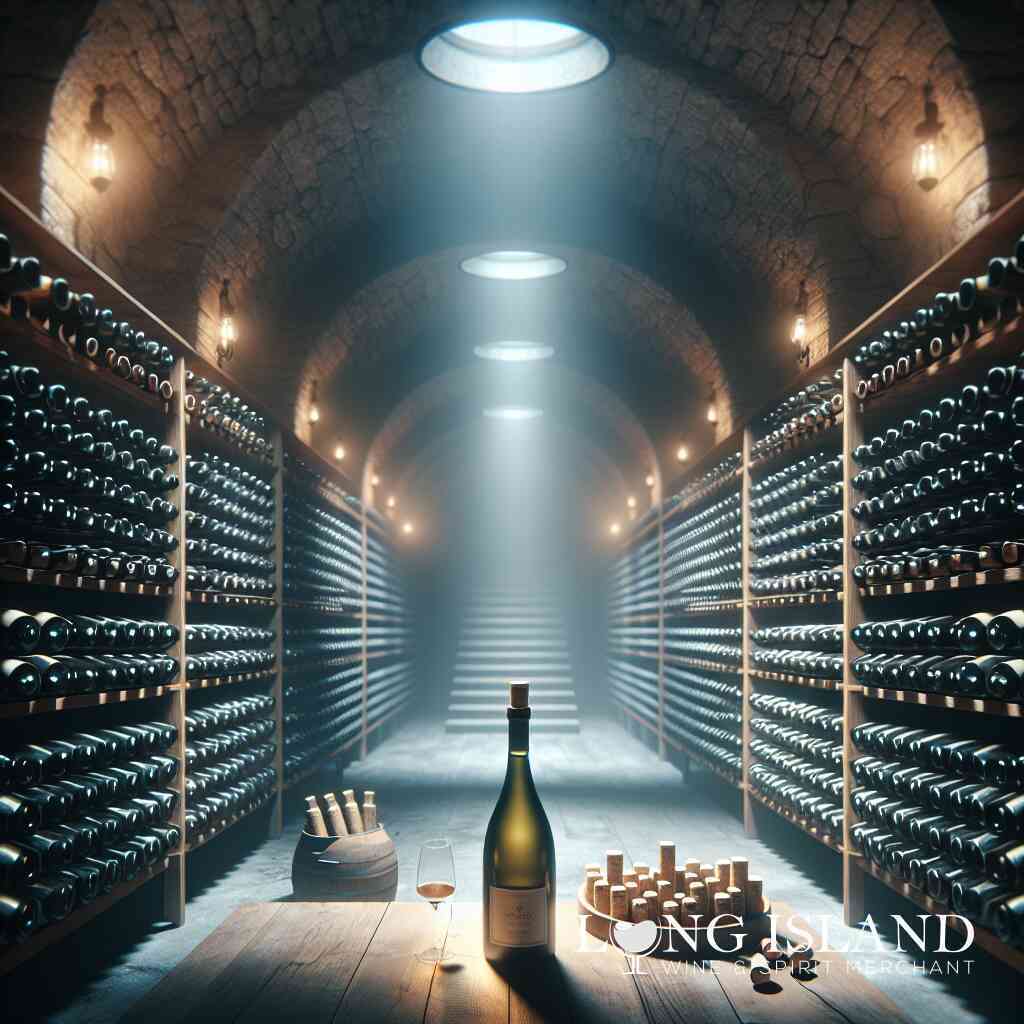
Fortified Wine Shelf Life and Storage Tips
Exploring the Durability of Port, Marsala, and Sherry
Fortified wines, such as Port, Marsala, and Sherry, enjoy a notable reputation for their robust shelf life and intricate flavor profiles that have the potential to evolve beautifully over time. These wines undergo a fortification process whereby a spirit, typically brandy, is added, enhancing both their alcohol content and longevity. Port wine, with its rich, sweet flavors, can last for decades, gradually developing a complex array of nuanced tastes. Marsala and Sherry, too, exhibit remarkable durability, owing to their distinctive production processes that integrate oxidation and aging, offering a unique tasting journey. Understanding the fortified wine storage guidelines is crucial to ensure these wines are stored correctly to preserve their exquisite qualities.
Optimal Storage Conditions for Fortified Wines
To preserve the essence and extend the lifespan of fortified wines, adhering to optimal storage conditions is essential. Similar to other fine wines, fortified wines thrive in environments where the temperature is controlled at around 55°F, with relative humidity at approximately 70%. This balance prevents the cork from drying out or becoming too moist, both of which can lead to spoilage. Moreover, storing the bottles horizontally keeps the cork in contact with the wine, preventing it from shrinking and allowing oxygen to seep in. The cellar or storage area should be dark, as prolonged exposure to light can degrade the wine’s quality. Ensuring these conditions can significantly contribute to maintaining the fortified wine’s integrity and depth of flavor over time.
How Fortification Affects Wine Longevity
The method of fortification uniquely positions fortified wines, like Port, Marsala, and Sherry, for extended longevity, making them some of the most durable wines available. The addition of spirits not only increases their alcohol content but also stabilizes the wine, allowing it to withstand the test of time and often improve with age. This process gives fortified wines their richly layered and complex flavor profiles, which can continue to develop nuances for many years, sometimes even decades after bottling. The key to unlocking the full potential of these cherished bottles lies in their meticulous storage, ensuring they are preserved under ideal conditions to foster a graceful and rewarding aging process. With proper care, oenophiles can savor the evolving character of their fortified wines, making each uncorking a momentous occasion to cherish.
Preventing Wine Oxidation and Maintaining Quality
Understanding Wine Oxidation
Wine oxidation occurs when wine is exposed to air, leading to chemical reactions that can alter its aroma, flavor, and color. While a small amount of oxygen is essential during the winemaking process to mature the wine properly, excessive exposure after bottling can lead to deterioration. Oxidation can cause the wine to lose its vibrant character, turning fresh, fruity flavors into dull, flat notes. For unopened bottles, the risk begins once the seal is compromised, emphasizing the importance of proper cork integrity and storage conditions. By understanding wine oxidation, enthusiasts can take proactive steps to ensure their collection remains in optimal condition, preserving the pleasurable tasting experience intended by the vintner.
Tips for Keeping Your Wine Fresh Longer
To extend the freshness of wine and counteract the effects of oxidation, certain practices are paramount. First and foremost, storing wine at the correct temperature is crucial. Consistent, cool temperatures significantly slow down the oxidation process. Keep your bottles away from direct sunlight and fluctuating temperatures which can compromise the wine’s quality. Humidity also plays a role, too little can dry out corks, allowing air to enter the bottle. Additionally, storing wine bottles horizontally can help keep the cork moist from the wine, forming a tighter seal against oxygen. For those looking to ensure their wine remains vibrant and lively for celebrations to come, focusing on these storage fundamentals can maintain the integrity and character of each bottle, making every uncorking a testament to time well preserved. Adopting these techniques is a testament to ensuring wine freshness for longer periods, keeping the essence of the vineyard alive in your glass.
Recognizing Signs of Oxidation in Your Wine Collection
Identifying wine oxidation signs is critical for any wine collector or enthusiast. Oxidized wines often exhibit a color change, white wines may appear darker, taking on a yellow or brown hue, while red wines lose their brightness, becoming brownish. The flavor and aroma profiles also shift, with fresh, fruity, or floral notes degrading into flat, nutty, or even vinegar-like qualities. These characteristics can indicate that the wine has been adversely affected by too much exposure to air. Understanding these signs helps in assessing the condition of your wine, ensuring you enjoy your collection at its best. By proactively checking your wines for these oxidation signs, you can make informed decisions about which bottles to open next or identify if there are issues with storage conditions that need addressing. For wine lovers looking to safeguard the flavors carefully crafted by winemakers, identifying wine oxidation signs is a key skill in the art of wine preservation.
Serving and Enjoying Your Prized Bottles
Deciding When to Open Your Wine
The anticipation of opening a bottle from your wine collection can be as exhilarating as savoring its contents. Deciding when to open your wine involves understanding its maturity and potential for development. While some wines are designed to be enjoyed in their youth, others benefit significantly from age, evolving into more complex, aromatic, and flavorful versions of themselves. Factors such as the wine’s varietal, vintage, storage conditions, and personal preferences play pivotal roles in this decision. Vintage charts and tasting notes from winemakers can offer valuable guidance, but ultimately, the perfect moment to uncork a bottle may hinge on a special occasion or milestone, transforming the act into a memorable experience that complements the wine’s journey.
The Art of Decanting: Enhancing Wine Quality Before Serving
Decanting is a ritual that not only involves aerating the wine but also separates it from any sediment that may have formed over time. This practice serves two primary purposes oxygenate a younger wine, thus enhancing its flavors and aromas, and ensure clarity and purity in older vintages by leaving the sediment in the decanter. Decanting is an art that, when performed correctly, can significantly improve a wine’s quality before serving. Pouring wine into a decanter allows it to breathe, unlocking deeper complexities within its profile. For enthusiasts aiming to elevate their wine-tasting experiences, mastering the art of decanting is a skill worth acquiring. Techniques vary depending on the wine’s age and type, but the essence remains the same: to celebrate and enhance the wine’s character, ensuring every glass offers the best possible expression of the vineyard’s craft.
Pairing Your Wine with the Perfect Occasion
Wine has the unique ability to transcend simply being a beverage, it becomes a vital component of any celebration, capable of elevating meals and moments into extraordinary experiences. The art of pairing your wine with the perfect occasion goes beyond matching food and wine flavors-it’s about capturing the essence of the moment. From the joyous bubbles of a sparkling wine toasting a milestone anniversary to the solemn depth of a vintage red wine shared in intimate gatherings, or the refreshing zing of a rosé at a summer soirée, every wine has its moment. Understanding the interplay between the event’s atmosphere, the wine’s characteristics and the preferred tastes of your guests can transform a simple meal into a curated culinary adventure. Whether it’s a bold, full-bodied wine for a festive celebration or a light, crisp white to complement a serene sunset view, the right wine can encapsulate the spirit of any occasion, making every sip a cherished memory.
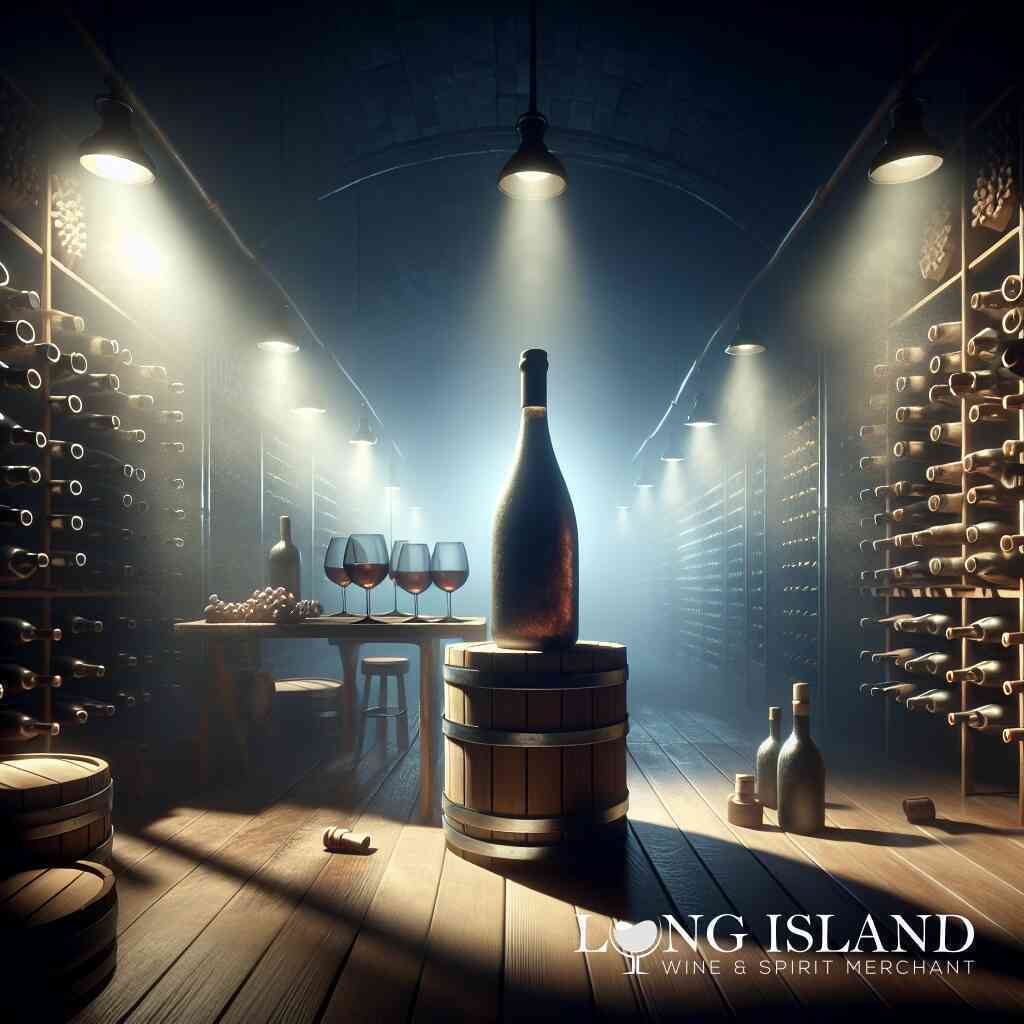
Eternal Wines: Knowing What Lasts the Longest
Exploring the World of Long-Lasting Wines
The journey into the world of wines that withstand the test of time uncovers a fascinating intersection of science, tradition, and art. Wines renowned for their longevity often share common traits, such as a robust tannin structure, optimal acidity, balanced alcohol content, and the capacity to evolve complexity over time. Vintage Port, top-tier Bordeaux, aged Rieslings, and certain Barolos stand as monuments to the endurance and evolving elegance of well-crafted wines. These wines are not just beverages, they are storied vessels of history and tradition, embodying the essence of their terroir and the meticulous care imbued by their creators.
Venturing into Long Island vineyard tours for novices can provide an immersive education into the factors that contribute to a wine’s ability to age with grace. Here, enthusiasts learn firsthand from the vintners who navigate the delicate balance of elements necessary to craft wines destined for longevity. The soil’s composition, grape varietal, climatic conditions and winemaking techniques converge to lay the foundation for a wine’s enduring journey.
Wine Investment: Selecting Wines That Age Gracefully
Investing in wines with the potential for graceful aging requires discernment, patience, and a keen understanding of wine market dynamics. Seasoned collectors recognize that not all wines are created with age-ability in mind, indeed, a significant portion of today’s wine production is intended for consumption within a few short years of bottling. However, for those wines crafted for the long haul, their value and complexity can increase remarkably over time.
Key to making enlightened investments in age-worthy wines is the ability to distinguish between short-lived pleasures and enduring treasures. Factors such as the wine’s pedigree, critical acclaim, vintage quality, and provenance play pivotal roles in this selection process. Furthermore, engaging with reputable wine sellers, like Long Island Wine and Spirit Merchant, ensures access to a curated selection of wines with verified aging potential and storied backgrounds.
High-Quality Security for Your Long-Term Wine Investment
The proper preservation of long-term wine investments demands an environment that mirrors the conditions of the world’s most prestigious wine cellars. Temperature stability, precise humidity control, protection from light exposure, and vibration-free storage are non-negotiable elements to ensure the optimal maturation of fine wines. Advanced security measures, including temperature alarms and inventory tracking systems, further safeguard the collection, providing peace of mind to the investor.
For enthusiasts embarking on the journey of building a long-term wine collection, consulting with experts at Long Island Wine and Spirit Merchant can illuminate the path towards setting up a home cellar that meets professional standards. These specialists can advise on both the latest in cellar technology and strategies for wine acquisition that align with personal tastes and investment goals. The integration of digital strategies for marketing Long Island wines also plays a crucial role in staying informed about market trends and discoveries in the world of collectible wines.
By exploring the world of long-lasting wines, engaging in informed wine investment, and securing high-quality conditions for wine storage, enthusiasts can ensure their collections not only endure but flourish. Each bottle, carefully selected and preserved, becomes a testament to the timeless allure of wine and its capacity to connect us across generations.
In Vino Veritas: Summing Up Wine’s Timeless Journey
The journey from vineyard to glass encapsulates not just the chemical transformation of grapes into wine but also a tradition steeped in history and culture. Exploring the nuances of wine’s evolution, from aging to preservation, allows for a deeper understanding and appreciation of this ancient craft. In summing up wine’s enduring legacy, it’s essential to consider the implications for collectors and enthusiasts, the cultural significance, and the outlook for future practices in wine aging and collection.
Reflections on Wine Collection and Preservation
Wine collection and preservation are practices as old as winemaking itself, reflecting humanity’s enduring fascination with wine’s capacity to capture and express the essence of time and place. Every bottle of wine tells a story narrative of the year’s weather conditions, the soil’s character, and the winemaker’s artistry. Collectors, therefore, don’t just gather bottles, they curate experiences, memories, and history.
Preservation techniques have evolved, moving from underground caves to modern, climate-controlled cellars, yet the goal remains unchanged: to maintain the wine’s integrity until it reaches its peak. Recognizing the importance of storage conditions, humidity, and light underscores the delicate balance of chemistry and art that defines fine wine. As enthusiasts and collectors continue to pursue this timeless quest, the dialogue around optimal preservation strategies enriches our collective understanding and appreciation of wine.
Cultivating a Lasting Appreciation for Fine Wine and Good Spirits
The cultivation of a lasting appreciation for wine and spirits involves both education and experience. Engaging with wine-tasting essentials on Long Island provides an immersive way to explore the sensory attributes that define different varietals and styles. Knowledge enhances enjoyment, empowering individuals to discern the subtle nuances that make each bottle unique.
This appreciation extends beyond taste to encompass the historical, geographical, and cultural contexts that give rise to various wine and spirit traditions. Exploring the history and culture of Commack, NY, for instance, offers a glimpse into the region’s contribution to Long Island’s rich wine heritage. Such insights deepen our connection to the beverages we enjoy, linking each sip to a broader narrative of human creativity and natural beauty.
The Future of Wine Aging and Collection
Looking ahead, the future of wine aging and collection appears both promising and dynamic. Innovations in technology and shifts in consumer preferences are likely to influence how we age, collect, and appreciate wine. The wine aging and collection’s future in Long Long Island reflects a growing interest in sustainability, authenticity, and experiential richness.
Collectors and enthusiasts are increasingly seeking wines that not only have the potential to age gracefully but also tell a compelling story of ecological stewardship and cultural heritage. This evolving landscape presents exciting opportunities for experimentation and discovery, with winemakers embracing both traditional methods and innovative techniques to meet the sophisticated demands of contemporary palates.
In conclusion, the journey of wine from the vineyard to the glass is a multifaceted narrative of transformation, tradition, and exploration. As we reflect on wine’s timeless journey, the shared experiences of tasting, collecting, and preserving wine remind us that, in every bottle, lies a world of potential distilled essence of time, place, and human ingenuity, inviting us to explore and savor its myriad treasures.
Frequently Asked Questions
Question: How can I ensure the best longevity for my unopened wine collection?
Answer: Ensuring the best longevity for your unopened wine collection involves several key factors detailed in wine preservation practices. Firstly, storing wine in optimal conditions is crucial, where a consistent temperature of around 55°F and humidity levels of about 70% mirror the ideal wine cellar environment. Light exposure should be minimized, as UV rays can degrade the quality of wine over time. Additionally, storing wine bottles horizontally keeps the cork moist, preventing it from drying out and allowing air to spoil the wine. By choosing Long Island Wine & Spirit Merchant, you gain access to expert advice and a wide selection of wines curated for their longevity. Whether you’re looking to expand your collection with red wine, sweet red wines, or exploring options like Taylor port wine or Marsala wine, creating the perfect conditions in your wine cellar or storage area is achievable with our comprehensive wine and spirits range.
Question: What should I look for in a wine if I’m interested in long-term aging, specifically for red and white wines?
Answer: When interested in long-term aging, especially for red and white wines, there are several factors to consider that contribute to wine’s aging potential. For red wines, look for a robust structure, high tannin levels, and balanced acidity. These elements suggest that the wine will develop complexity and depth over time. Fine red wines, such as Bordeaux, Burgundy, and certain Cabernet Sauvignon, are known for their aging potential. For white wines, acidity is a crucial factor for longevity. White wines like Riesling and Chardonnay that exhibit high acidity levels and complexity can age gracefully, gaining richness and aromatic layers. At Long Island Wine & Spirit Merchant, we specialize in fine wine and good spirits, offering a thoughtfully curated selection that includes age-worthy options. Our knowledgeable team can guide you in selecting wines with great aging potential, whether it’s a complex red wine or a vibrant white wine, ensuring your wine investment matures beautifully.
Question: In the blog post ‘How Long Does Wine Last Unopened?’, it’s mentioned that storage conditions play a significant role. Can Long Island Wine & Spirit Merchant recommend any specific wine storage solutions?
Answer: understanding the significant impact of optimal storage conditions on unopened wine’s longevity, Long Island Wine & Spirit Merchant advocates for creating an environment that best preserves the wine’s quality. We recommend investing in a good wine cooler or a custom wine cellar that maintains a constant temperature of around 55°F, with relative humidity levels around 70%. This replicates the natural cave conditions historically ideal for wine aging. Additionally, we suggest using wine racks that allow for horizontal storage to keep the corks moist and ensure integrity. For those seeking advanced solutions, we offer options for climate-controlled storage units and cellar management advice to safeguard your prized wines, from sparkling wines to fortified wines like port and sherry. Discover more about our wine and spirits near Commack. Our selection of wine accessories, including wine storage solutions, is designed to meet the needs of both novice and experienced wine collectors, ensuring your unopened wine remains in pristine condition for years or even decades.
Question: Can Long Island Wine & Spirit Merchant guide you on when to drink my wine at its peak?
Answer: Long Island Wine & Spirit Merchant excels in helping enthusiasts determine the optimal time to enjoy their wines. Deciding when to open your wine to savor it at its peak involves understanding its aging potential and monitoring its development. Our team offers specialized services, including wine tastings and consultations, to assist in this regard. By considering the wine’s varietal, vintage, and the conditions under which it has been stored, we can provide insights into the maturity and readiness of your wine. For collectors aiming to enjoy their wines at the pinnacle of expression, we also offer access to resources like vintage charts and cellar tracking tools. With a focus on Long Island wine and spirits, our expertise spans both local treasures and internationally renowned wines, ensuring you have the knowledge to decide when your wine is at its prime for enjoyment. Learn more about Long Island’s wine festivals.
Question: How does Long Island Wine & Spirit Merchant assess the quality and preservation status of wines offered, particularly older vintages?
Answer: At Long Island Wine & Spirit Merchant, assessing the quality and preservation status of our wines, especially older vintages, involves a rigorous selection process. We source our wines directly from trusted vineyards and producers, ensuring provenance and proper storage conditions from vineyard to bottle. Our experienced team conducts regular tastings and evaluations of our inventory, considering factors such as color, aroma, and taste profile, which are indicative of the wine’s condition and aging trajectory. For older vintages, we pay close attention to storage history, cork integrity, and bottle ullage to gauge quality preservation over time. By maintaining high standards for our selection, we offer wine enthusiasts and collectors access to a diverse and exemplary range of wines, confident in their quality and readiness for enjoyment or further aging. Trust in Long Island Wine & Spirit Merchant for curated selections that stand the test of time, from sparkling and fortified wines to the finest red and white wines.

